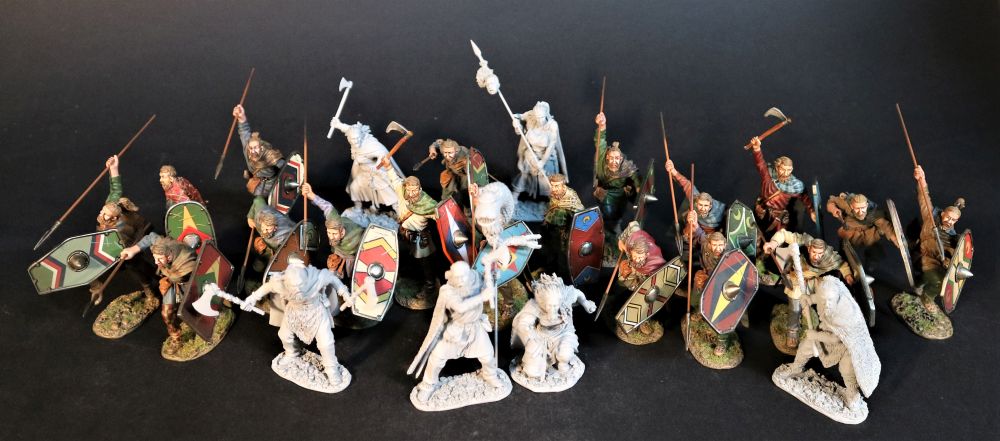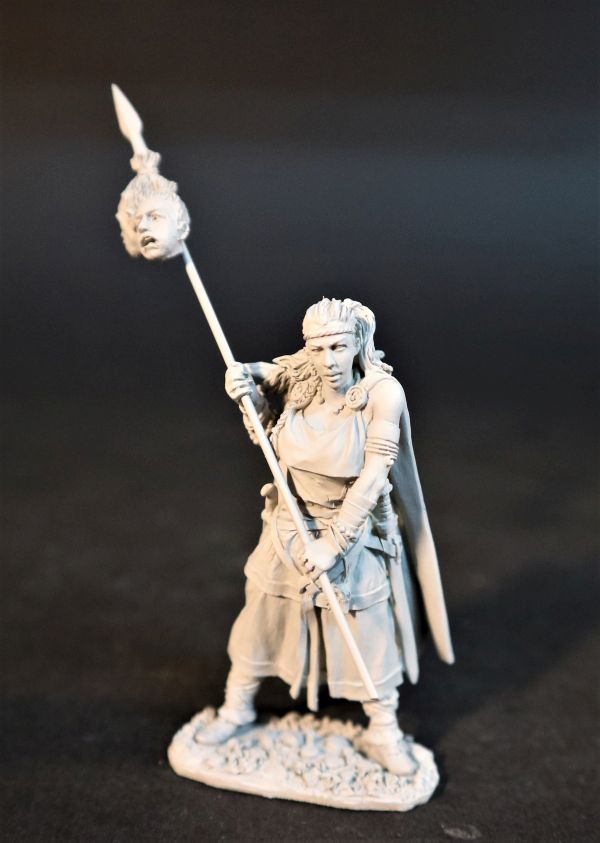6th Mar 2023
John Jenkins Designs: Ancient Germans at the Battle of Teutoburg Forest
Following two decades of Roman occupation, Germania Magna erupted into revolt in AD 9, resulting in the stunning loss of three Roman legions to an alliance of Germanic nations at Teutoburg. The Battle of the Teutoburg Forest, described as the Varian Disaster by Roman historians, took place in the Teutoburg Forest in 9 CE, when an alliance of Germanic tribes ambushed and decisively destroyed three Roman legions and their auxiliaries, led by Publius Quinctilius Varus.

The alliance was led by Arminius, a Germanic officer of Varus' auxilia. Arminius had acquired Roman citizenship and had received a Roman military education, which enabled him to deceive the Roman commander methodically and anticipate the Roman army's tactical responses.
Despite several successful campaigns and raids by the Romans in the years after the battle, they never again attempted to conquer the Germanic territories east of the Rhine river. The victory of the Germanic tribes against Rome's legions in the Teutoburg Forest would have far-reaching effects on the subsequent history of both the ancient Germanic peoples and the Roman Empire. Contemporary and modern historians have generally regarded Arminius' victory over Varus as "Rome's greatest defeat", one of the most decisive battles recorded in military history, and as "a turning-point in world history"

The Germanic warrior was a well trained, battle-hardened, combat ready and motivated fighter, who excelled in irregular warfare, ambushes, raids and petty warfare. In an ambush the lightly armed Germanic fighter could decisively defeat a heavily equipped legionary by using surprise and the terrain to his advantage.
These warriors were perfectly equipped for the Germanic landscape of open fields, forests and swamps. The weapons which were used included the long lance or Framea, which could be swung, thrust or thrown at an opponent. Hair was grown long and often tied up in a figure of eight or “Suebian” knot.
In a set-piece battle the German could stand up to the Roman Leginary discipline and formations for a while, but in close quarters combat the advantage eventually shifted to the legionary.
GERMANIC WARRIOR WOMEN
For the Romans, ethnographic observations were often a by-product of campaigning. All the more is it noteworthy that Roman historians repeatedly delve into descriptions of the warlike nature of Germanic women.
The most common involvement of women in combat seems to have been in the defence of the wagon fort. Germanic tribes used laagers to protect their baggage and sometimes also as a defensive tactic in itself. For example, at the battle of Adrianople (378 AD), the Goths formed up behind a circular ring of wagons. 
When an army was beaten and the enemy moved against the wagon fort, the women and sometimes even the children entrenched there often put up a fierce fight. Plutarch writes about one of Caesar’s battles against the Helvetians:
“After a long and hard struggle he routed the enemy’s fighting men, but had the most trouble at their rampart of waggons, where not only did the men themselves make a stand and fight, but also their wives and children defended themselves to the death and were cut to pieces with the men.” (Plutarch, Life of Caesar 18)
Scenes like this seem to have happened often, as they can be found in several sources. This of course if not surprising if one considers that surrender would have meant slavery at the best.
Germanic women were forced to defend the wagon trains after many battles against the Romans.
If a tribe was caught up in a fight while migrating or moving for any reason, women would not be left behind. Germanic women would yell at their fighting men, sometimes with their children on hand to witness the fighting. The women encouraged their children to yell and, with bare breasts, shouted reminders at the men that they must be victorious in combat or their families would be captured and enslaved… or worse, slaughtered wholesale.
Their shouts encouraged their men to fight harder, as women were considered holy spirits. Letting them fall into enemy hands was the ultimate failure.

The Roman Senator and historian Tacitus wrote in his work, Germania:
“A specially powerful incitement to valor is that the squadrons and divisions are not made up at random by the mustering of chance-comers, but are each composed of men of one family or clan. Close by them, too, are their nearest and dearest, so that they can hear the shrieks of their women-folk and the wailing of their children. These are the witnesses whom each man reverences most highly, whose praise he most desires. It is to their mothers and wives that they go to have their wounds treated, and the women are not afraid to count and compare the gashes. They also carry supplies of food to the combatants and encourage them.
It stands on record that armies already wavering and on the point of collapse have been rallied by the women, pleading heroically with their men, thrusting forward their bared bosoms, and making them realize the imminent prospect of enslavement - a fate which the Germans fear more desperately for their women than for themselves. Indeed, you can secure a surer hold on these nations if you compel them to include among a consignment of hostages some girls of noble family. More than this, they believe that there resides in women an element of holiness and a gift of prophecy; and so they do not scorn to ask their advice, or lightly disregard their replies.

The women were more than just morale builders, though. They provided aid and comfort to their men after the battle was over, of course. And they would bring supplies and food to their male warriors in the middle of the fight.”
If the battle didn’t go well, however, Germanic women could take on an entirely new role. They might kill any male members of the tribe who attempted retreat. They could even kill their children and then commit suicide rather than submit to enslavement by another tribe or army

